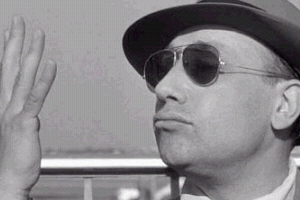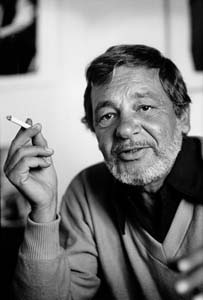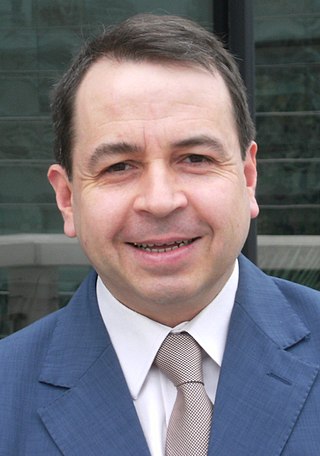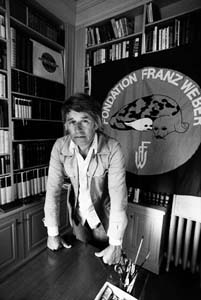
Delphi, in legend previously called Pytho (Πυθώ), was an ancient sacred precinct and the seat of Pythia, the major oracle who was consulted about important decisions throughout the ancient classical world. The ancient Greeks considered the centre of the world to be in Delphi, marked by the stone monument known as the Omphalos of Delphi (navel).
An omphalos is a religious stone artefact. In Ancient Greek, the word ὀμφᾰλός means "navel". Among the Ancient Greeks, it was a widespread belief that Delphi was the center of the world. According to the myths regarding the founding of the Delphic Oracle, Zeus, in his attempt to locate the center of the Earth, launched two eagles from the two ends of the world, and the eagles, starting simultaneously and flying at equal speed, crossed their paths above the area of Delphi, and so that was the place where Zeus placed the stone.

Pythia was the title of the high priestess of the Temple of Apollo at Delphi. She specifically served as its oracle and was known as the Oracle of Delphi. Her title was also historically glossed in English as the Pythoness.

Jean-Pierre Serre is a French mathematician who has made contributions to algebraic topology, algebraic geometry and algebraic number theory. He was awarded the Fields Medal in 1954, the Wolf Prize in 2000 and the inaugural Abel Prize in 2003.

The Collège de France, formerly known as the Collège Royal or as the Collège impérial founded in 1530 by François I, is a higher education and research establishment in France. It is located in Paris near La Sorbonne. The Collège de France has been considered to be France's most prestigious research establishment. It is an associate member of PSL University.

Jean-Pierre Aumont was a French actor as well as holder of the Légion d'Honneur and the Croix de Guerre for his World War II military service.

Jean-Pierre Grumbach, known professionally as Jean-Pierre Melville, was a French filmmaker. Considered a spiritual godfather of the French New Wave, he was one of the first fully-independent French filmmakers to achieve commercial and critical success. His works include the crime dramas Bob le flambeur (1956), Le Doulos (1962), Le Samouraï (1967), and Le Cercle Rouge (1970), and the war films Le Silence de la mer (1949) and Army of Shadows (1969).

Bascharage is a town and a former commune in south-western Luxembourg. Since 2012, it is part of the commune of Käerjeng.

France competed at the 1968 Summer Olympics in Mexico City, Mexico. 200 competitors, 169 men and 31 women, took part in 107 events in 16 sports.

The Temple of Apollo, also known as Apollonion, was a major part of the Panhellenic religious sanctuary located in Central Greece at Delphi. The temple and sanctuary at large were dedicated to one of the major Greek deities, Apollo, the god of archery, music, light, prophecy, the arts, and healing. There have been several temples built at Delphi throughout the history of the site, though the visible ruins seen in modernity are those of the temple built in the 4th century B.C.E. before its destruction under the orders of Theodosius I in 390 C.E.. During antiquity, the temple was home to the famous Greek prophetess the Pythia, or the Oracle of Delphi, making the Temple of Apollo and the sanctuary at Delphi a major Panhellenic religious site as early as the 8th century B.C.E., and a place of great importance at many different periods of ancient Greek history. References to Delphi, the sanctuary, the temple, and the prophecies of the Pythia are made throughout ancient Greek mythology and historical accounts from the periods of its use.

Émile Gardaz was a Swiss radio moderator and author, working for Radio suisse romande since 1955. He was the father of comedian Sophie Gardaz.

Jean-Pierre Thiollet is a French writer and journalist.

The French School at Athens is one of the seventeen foreign archaeological institutes operating in Athens, Greece.

Franz Weber was a Swiss environmentalist and animal welfare activist.

The Athenian Treasury at Delphi was constructed by the Athenians to house dedications and votive offerings made by their city and citizens to the sanctuary of Apollo. The entire treasury including its sculptural decoration is built of Parian marble. The date of construction is disputed, and scholarly opinions range from 510 to 480 BCE. It is located directly below the Temple of Apollo along the Sacred Way for all visitors to view the Athenian treasury on the way up to the sanctuary.

Karine Jean-Pierre is an American political advisor who has been serving as the White House press secretary since May 13, 2022, and a senior advisor to President Joe Biden since October 7, 2024. She is the first black person and the first openly LGBTQ person to serve in the position of White House press secretary. Previously, she served as the deputy press secretary to her predecessor Jen Psaki from 2021 to 2022 and as the chief of staff for U.S. Vice Presidential candidate Kamala Harris during the 2020 presidential campaign.

The Lake Brochu is a vast expanse of freshwater in the south-eastern part of the Gouin Reservoir, in the territory of the town of La Tuque, in the administrative region of Mauricie, in the province of Quebec, in Canada.

Pissuthnes, also known as Pissouthnes, was an Achaemenid satrap of Lydia, which included Ionia, circa 440–415 BCE. His capital was Sardis. He was the son of Hystaspes, probably himself the son of Darius I, which shows his Persian origin and his membership of the Achaemenid dynasty. He held the satrapy for over twenty years, and became extremely rich as a consequence.
Hurricane F.Y.T! is a French Canadian drama film, directed by Ara Ball and released in 2023. The film centres on Delphis, a young boy from a rough neighbourhood in Montreal who calls himself "the Hurricane", who runs away from home to live life by his own rules.

















